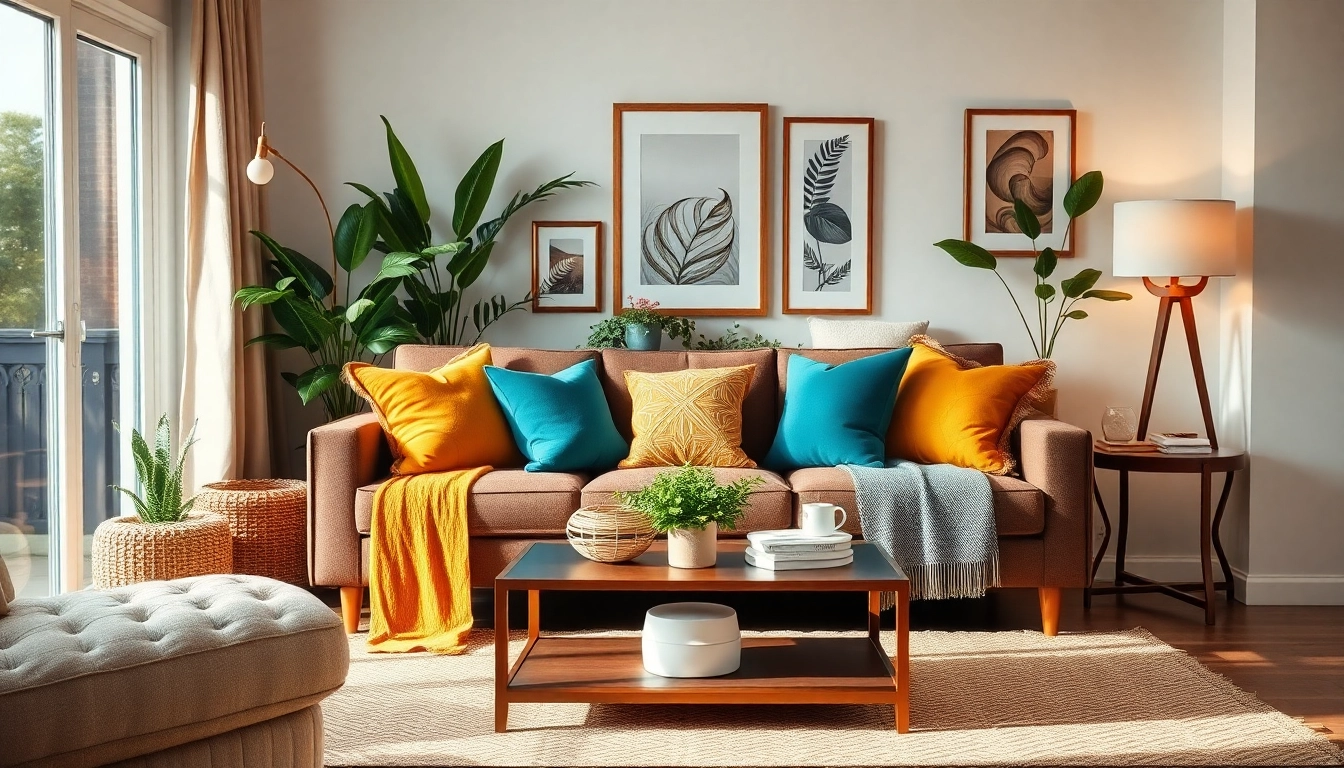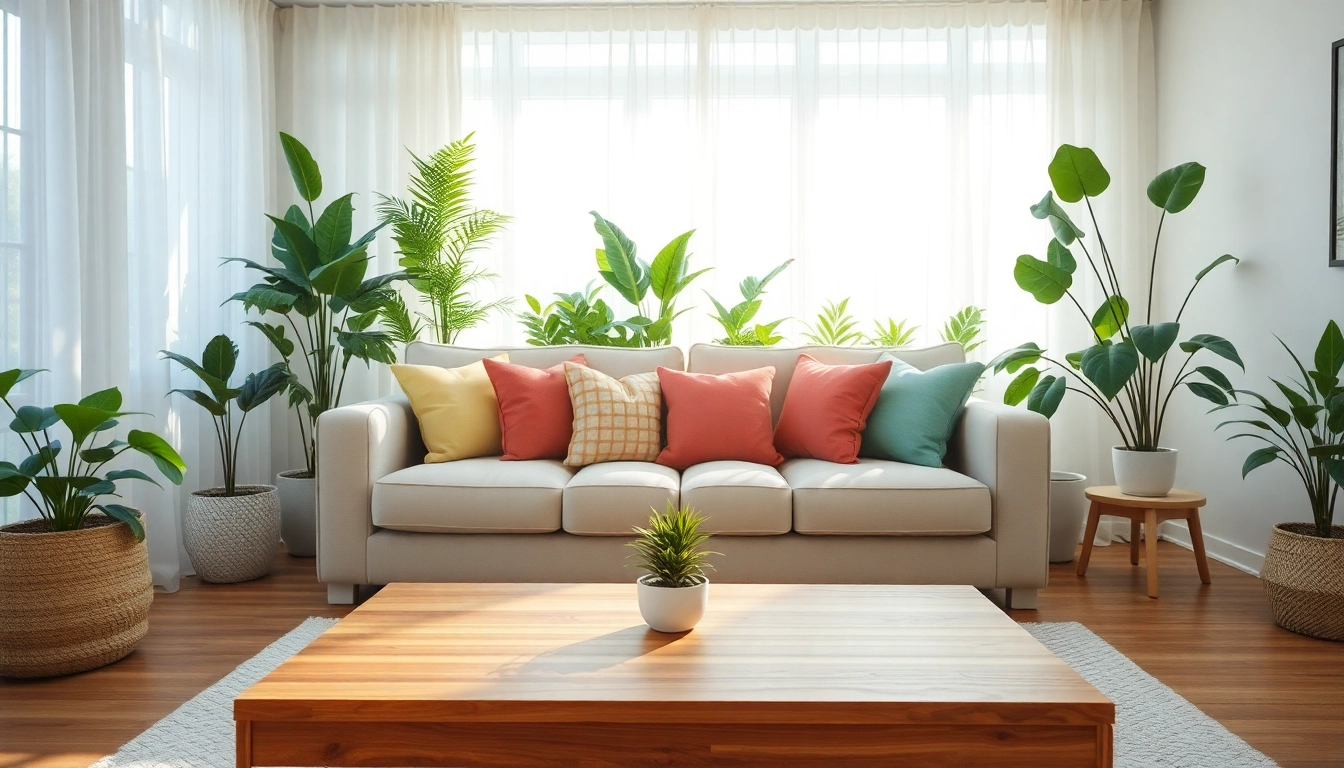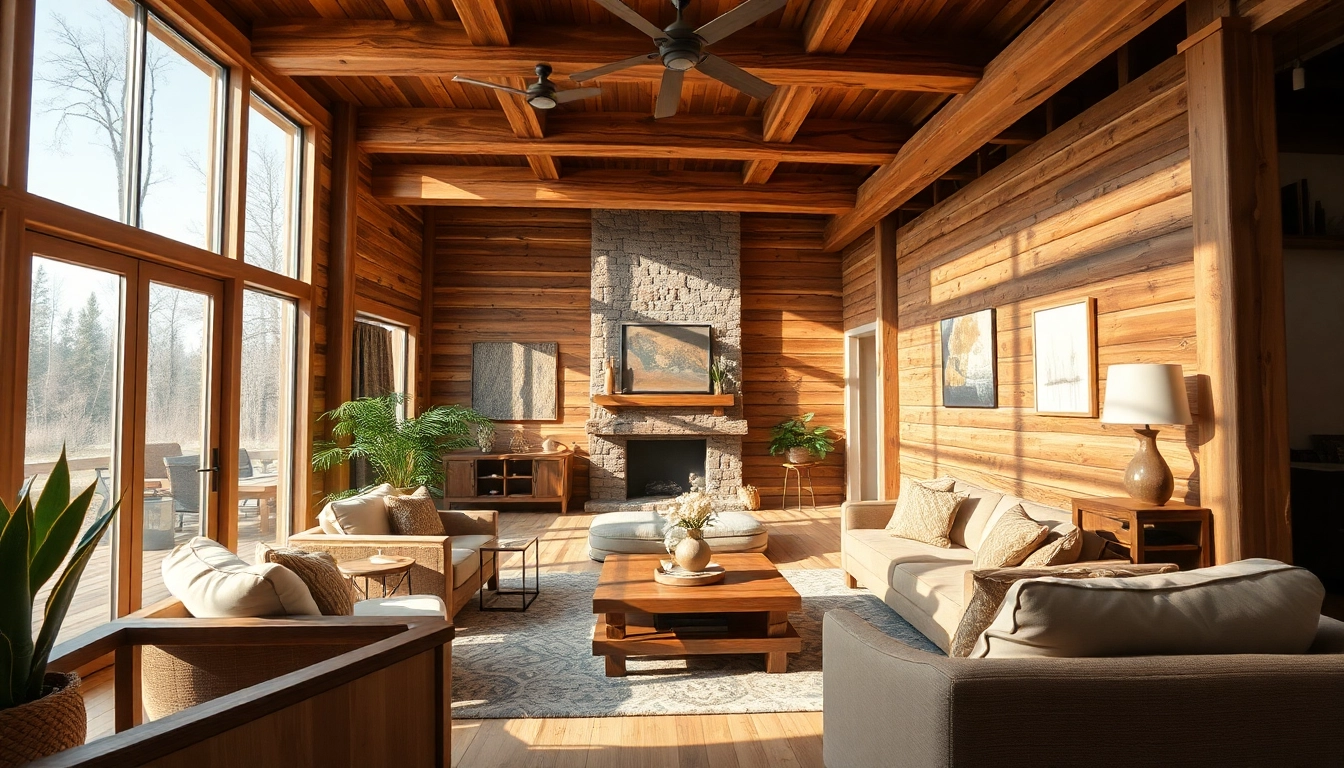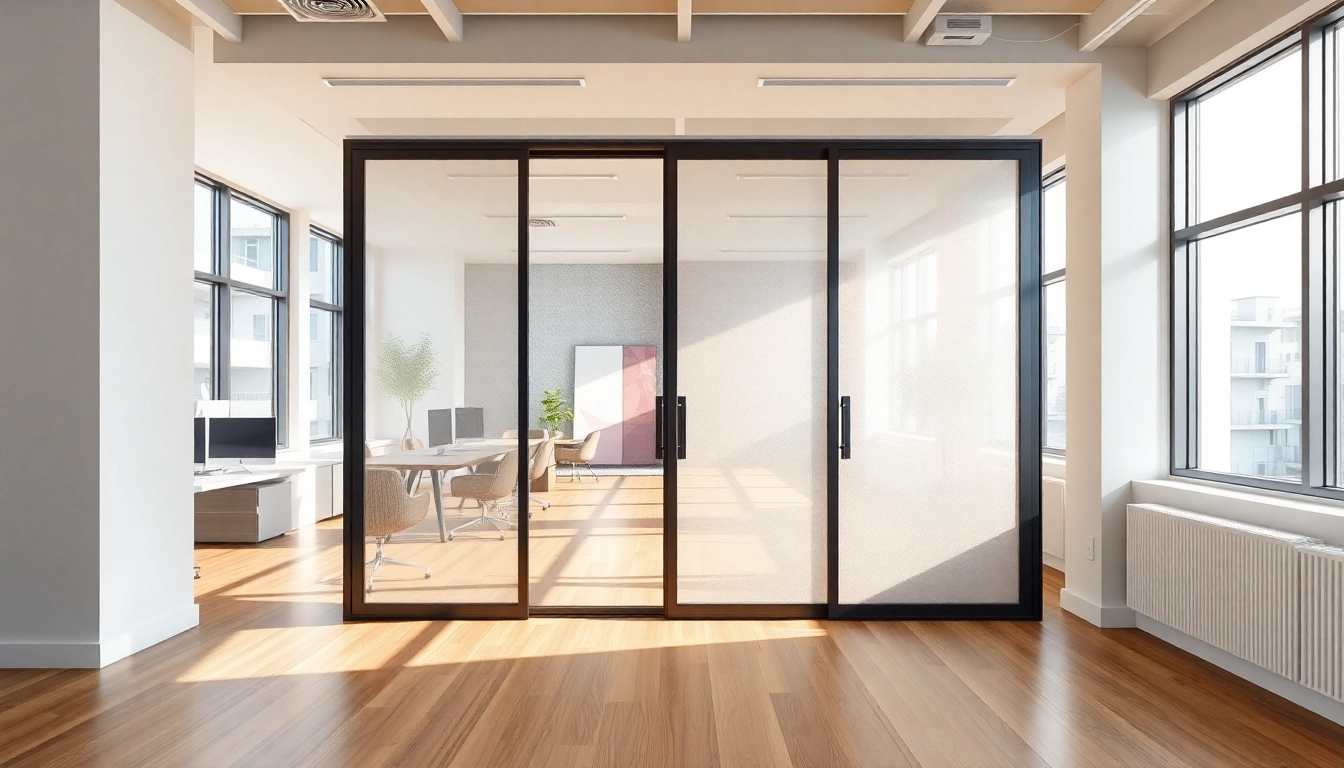Introduction to Home Decor Ideas
Transforming a living space into a haven of comfort and style requires thoughtful planning and creativity. Home decor ideas can vary widely across cultures, trends, and personal preferences, making it crucial for homeowners to discover approaches that resonate with their own tastes. From minimalist aesthetics to bold color palettes, the decisions surrounding interior design can significantly influence both the atmosphere and functionality of a home. In this article, we will explore various home decor ideas to inspire your next decorating project, including understanding different styles, finding inspiration, budget-friendly tips, the impact of color psychology, and actionable steps to implement these concepts effectively.
Understanding Different Styles
The foundation of any successful decorating project lies in understanding the various styles available. Each décor style brings its unique characteristics and ambiance:
- Modern: Clean lines, minimalism, and functional design define the modern style. Neutral tones often dominate, complemented by pops of color in artwork or decorative pieces.
- Traditional: Classic and formal, traditional decor incorporates rich fabrics, ornate details, and a structured arrangement. It often proves to be timeless, evoking a sense of history and elegance.
- Rustic: Celebrating a natural aesthetic, rustic decor emphasizes earthy tones, reclaimed wood, and organic materials, creating a cozy and grounding atmosphere.
- Industrial: Urban and edgy, industrial decor embraces coarse elements such as exposed brick, metal fixtures, and vintage accents, making it ideal for loft-style living.
- Bohemian: The Boho style is all about freedom of expression, combining eclectic prints, vibrant colors, and diverse cultural elements to create an inviting, lived-in feel.
By familiarizing yourself with these styles, you can pave the way for a cohesive decor approach that reflects your personality and lifestyle.
Importance of Personal Touch in Decoration
Personalizing your decor is what truly breathes life into a home. While it’s tempting to mimic popular trends, infusing your individuality will make your space distinctly yours. Consider the following:
- Incorporate Personal Items: Family photos, travel souvenirs, and favorite artworks can add character and nostalgia to your decor.
- Select Color Schemes that Reflect Your Mood: Choose hues that resonate with you emotionally—soft pastels for calmness or vibrant tones for liveliness.
- Develop a Consistent Theme: Whether it’s beachy vibes or vintage chic, a consistent theme will tie various elements together, creating harmony in your space.
In a world filled with curated influencer homes, creating a space that feels like you is not just about aesthetics—it’s about cultivating an environment that enhances your well-being and happiness.
Common Mistakes to Avoid
As rewarding as home decorating can be, it can also lead to common pitfalls:
- Overcrowding a Space: Avoid the temptation to fill every nook with decor. A cluttered room can feel chaotic rather than serene. Keep it simple.
- Ignoring Scale and Proportion: Ensure your furniture and decor items match the scale of your space. Oversized furniture in a small room can be overwhelming.
- Focusing Only on Trends: While it can be fun to incorporate trending styles, ensure that those choices reflect your style as well. Trends fade, but a timeless decor remains.
By being mindful of these common mistakes, you can avoid pitfalls that detract from your home’s overall aesthetic and functionality.
Finding Inspiration for Home Decor Ideas
Inspiration is abundant today, flowing from endless sources. Harnessing it requires creativity and exploration:
Using Online Platforms and Resources
Utilizing various online platforms can spark ideas and fuel your decorating journey. Popular websites, social media channels, and design blogs are treasure troves of visuals:
- Pinterest: This platform is prolific in its collection of home decor ideas, offering boards ranging from minimalist Scandinavian designs to intricate Mediterranean aesthetics.
- Instagram: The visual nature of Instagram allows users to follow popular decorators and interior designers, gaining insights into the latest trends through photos and stories.
- Design Blogs: Blogs specific to home improvement and decor often feature detailed articles, DIY guides, and before-and-after transformations.
Engaging with these platforms not only provides insight into current trends but also encourages you to think outside the box.
Trends in Home Decor for 2025
Staying up to date with the latest home decor trends ensures your space stays fresh and relevant. Some key trends to consider include:
- Sustainable Decor: Eco-friendly materials and sustainable practices gain momentum, encouraging decor choices that are both beautiful and considerate of the planet.
- Biophilic Design: This trend focuses on integrating nature into the home through plants, natural light, and organic shapes—enhancing well-being.
- Maximalism: A shift from minimalism, maximalism embraces bold colors, patterns, and eclectic pieces to express individuality.
Keeping an eye on these trends can help you make informed decisions while ensuring your decor remains stylish yet personal.
Creative Uses of Space
Innovative space usage is critical for enhancing functionality in your home. Here are a few ideas:
- Dual-Purpose Furniture: Select pieces that serve multiple functions, such as sofa beds or ottomans with storage compartments, perfect for smaller spaces.
- Utilizing Vertical Space: Make the most of walls by adding shelves for decoration and storage, allowing the floor area to remain clutter-free.
- Open Concept Layouts: Consider opening up spaces for a more airy feel, using large rugs or furniture arrangements to define areas softly.
Understanding how to use your space creatively can elevate your home’s functionality while maintaining style.
Budget-Friendly Home Decor Ideas
Home decor doesn’t have to break the bank. With a strategic approach, you can achieve beautiful transformations on a budget:
DIY Projects and Upcycling
One of the most rewarding ways to save money and personalize your space is through DIY projects. Some ideas include:
- Furniture Refinishing: Restore old furniture by sanding, painting, or staining to give it a new lease on life.
- Customized Wall Art: Create unique art using canvas, fabric, or repurposed materials, tailoring the piece specifically to your space.
- Garden or Home Decor: Begin an herb garden or use mason jars as decorative vases, enhancing both aesthetics and functionality.
Participating in DIY projects not only saves money but also offers a sense of accomplishment and contribution to your home’s character.
Affordable Furniture and Accessories
Transforming your space doesn’t require high-end furniture. There are a plethora of outlets for affordable options:
- Thrift Stores: Visit local thrift shops and flea markets for hidden gems that can be transformed into decor pieces.
- Online Marketplaces: Explore classifieds or local online marketplaces for secondhand furniture at a fraction of the retail price.
- Seasonal Sales: Take advantage of seasonal sales or clearance items to find deals that fit your budget.
Being creative and skeptical while shopping can facilitate finding stunning pieces without financial strain.
Thrifting and Vintage Finds
Thrifting has gained popularity for several reasons, providing unique, often one-of-a-kind items that add character to your home:
- Historical Charm: Vintage pieces bring unique stories and artistry, providing an eclectic vibe that new items often lack.
- Affordability: Vintage finds can often be much more affordable than new items, promoting sustainable consumption.
- Fostering Individual Style: By combining vintage with modern pieces, you can forge a look that is distinctly personal.
Exploring thrift stores offers an adventure in itself, where patience and a keen eye lead to treasured finds.
Color Psychology in Home Decor Ideas
Colors have profound effects on mood and perception within a space, making their selection critical in home decor:
Choosing the Right Color Palette
When determining the color scheme for a room, consider the atmosphere you wish to create:
- Neutrals: Great for creating a calm and inviting atmosphere, neutrals work well as backgrounds for more vibrant accents.
- Cool Colors: Blues and greens can evoke feelings of tranquility and relaxation, making them ideal for bedrooms or calming spaces.
- Warm Colors: Reds, oranges, and yellows can produce energy and vibrancy, suitable for social spaces like living areas or kitchens.
Whether you opt for a monochromatic scheme or contrasting hues, color should enhance the overall vibe of your home.
Effects of Colors on Mood
The psychology of color can directly affect your feelings and behavior. Understanding this can aid your decorating strategy:
- Cool Colors: Often associated with calmness and peace, these colors can help reduce stress in a home environment.
- Warm Colors: These colors tend to create warmth and stimulation, often making spaces feel cozier or more energetic.
- Neutral Colors: These colors promote versatility and balance, widely popular for backgrounds and large decor elements.
When selecting colors, think about how you want the room to make you, your family, and guests feel during use.
Exploring Textures and Patterns
Incorporating texture and patterns into your decor can enrich visual appeal and tactile interactions:
- Layering Textures: Combining different materials, such as wood, metal, and fabrics, will create depth in the design.
- Bold Patterns: Using patterned wallpaper or textiles can add excitement and interest to your decor.
- Consistency is Key: Ensure that textures and patterns within the space complement each other for a harmonious look.
Effectively utilizing textures and patterns can add dimension and complexity to the overall appearance of your home.
Implementing Home Decor Ideas Effectively
The final aspect of successful home decor lies in the implementation of ideas in a way that maximizes their impact:
Step-by-Step Room Makeover Guide
Embarking on a room makeover requires a methodical approach. Follow these steps for a successful transformation:
- Define Your Goals: Understand what you want to achieve from the makeover. Is it increased functionality, aesthetic changes, or both?
- Create a Plan: Sketch a layout, determine color schemes, and decide on furniture arrangements based on your personal style.
- Set a Budget: Establish a spending plan that aligns with your goals and identifies where to splurge versus save.
- Source Materials: Research and buy the necessary decor items, furniture, and accessories within your budget.
- Execution: Begin the makeover by painting walls, arranging furniture, and adding textiles or accessories as planned.
- Final Touches: Incorporate smaller elements like decor pieces, plants, and lighting to enhance the finished look.
Following a structured approach can relieve the overwhelm that often accompanies decorate projects, leading to a successful outcome.
Using Accessories to Enhance Decor
Accessories can dramatically alter the look and feel of a space, adding finishing touches that enhance the overall decor. Some ideas include:
- Cushions and Throws: Adding textured cushions and throws in complementary colors can create a warm, inviting atmosphere.
- Rugs: Use area rugs to define spaces and add visual interest, especially in open-plan layouts.
- Artwork: Select pieces that reflect your taste, adding personality and conversation starters to your rooms.
Accessories should be thoughtful additions rather than afterthoughts, tying the entire room together.
Maintenance Tips for Lasting Decor
Finally, maintaining your decor is crucial for ensuring its longevity and continued appeal:
- Regular Cleaning: Dusting surfaces and cleaning fabrics can help preserve your decor’s aesthetics and functionality.
- Periodic Updates: Even if you are happy with your decor, periodically rotating pieces or updating minor elements can refresh the space.
- Protect Your Investment: Use appropriate cleaning products for materials, consider protective coatings for wood, and be mindful of sunlight exposure on fabrics.
With consistent care, you can enjoy a beautifully decorated home that remains vibrant and inviting.














Leave a Reply